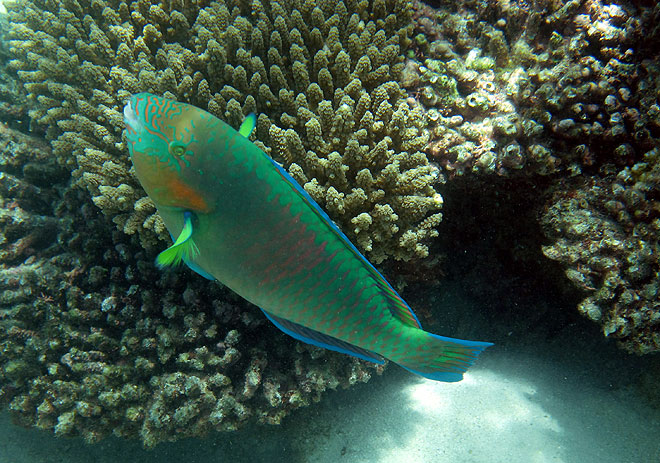The colourful, ubiquitous parrot fish is a marvellous addition to the waters surrounding the Great Barrier Reef. Besides handsomely adding to the colour spectrum of this coral rich wonderland, the parrot fish contains a number of quirks that makes it a particularly interesting species.
While there’s 30 different types of parrot fish in the Great Barrier Reef alone, it still relies on several inbuilt mechanisms to ensure its continued survival. Just one male parrot fish can produce whopping amounts of sperm that can fertilise a lot of females. So there’s really no need for a large male population. Furthermore, in case of a scant number of males, females can readily change sex.

Upon taking this daring leap into masculinity, females display the brilliant hues for which parrot fish are renowned. Other survival characteristics include their sleeping habits. Here the fish excrete a sleeping bag-like mucous, which surrounds them and offers protection from predators. Interestingly, this bag also contains antibiotical properties which greatly benefit the fish.
The parrot fish primarily evolved from the carnivorous wrasse. However during its evolutionary course, its teeth moved forward on its jawbone and reduced in size. It appears the evolutionary journey of the parrot fish is one swimming towards love, not war.
Today, these teeth are a very handy tool for scratching limestone, along with algae off the coral reefs. This gives them sustenance while helping breakdown cellulose. The parrot fish are also frequently seen excreting broken down sand.
Some scientists even say around 30% of the coral sand you see at the reef is parrot fish poo. This poo is believed to create small islands while contributing to the profusion of sandy beaches. It’s also estimated that one parrot fish can produce up to 90 kilograms of sand each year. An important contribution to reef ecology.
